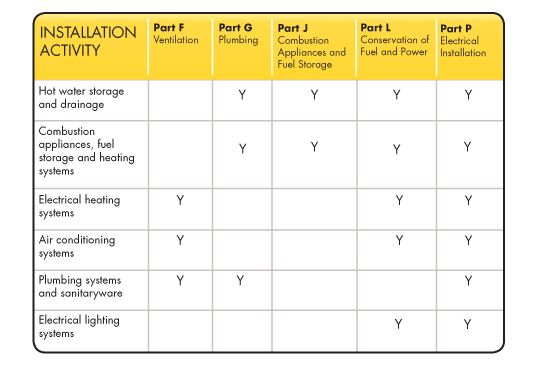|
click on the quick links above to find instant relevant electricans information

Benefits of using an NICEIC-registered Contractor
There are many benefits of using an NICEIC-registered contractor read on for more information.
Benefits of using an NICEIC-registered Contractor
NICEIC has been assessing the technical competence of contractors for over 50 years. Our aim is to protect everyone who uses electricity from unsafe electrical installations in their homes, places of work and leisure. To achieve this, we maintain a register of electrical contractors that we assess as complying with the various standards, codes of practice and Scheme rules.
Contractor assessment covers a representative sample of the contractors work, their premises, documentation, equipment, and the competence of their key supervisory staff. Once contractors become registered with NICEIC, they are re-assessed on a regular basis to ensure continued compliance.
Enrolment with NICEIC is voluntary, but electrical contractors that are competent and conscientious about the service they offer customers would consider it a priority to enrol. Over 20,000 contractors are registered by NICEIC, covering the whole of the UK, including Northern Ireland. This means that you're sure to have a choice of competent contractors operating in your area.
It is believed that approximately 90% of Local Authorities in the UK restrict work to NICEIC Approved Contractors on safety grounds and householders can be assured that all work undertaken by an NICEIC-registered contractor will be safe.
The main benefits of using a contractor registered by NICEIC include:
Safety and competence
Contractors registered by NICEIC are assessed on a regular basis to ensure that they are competent and capable of meeting the relevant technical and safety standards, codes of practice and rules of the Schemes they are registered to. Each Scheme has a defined set of competence criteria that contractors must meet to achieve and maintain registration.
Compliance with building regulations
Contractors registered to NICEIC Building Regulations Schemes are authorised to self-certify their work without hindrance from Local Authority Building Control. This saves you both time and money when undertaking work that requires notification under the Building Regulations.
Insurance Backed Warranty
The NICEIC Insurance Backed Warranty covers work undertaken by contractors registered to the NICEIC Domestic Installer Scheme that is notifiable to Building Control. The purpose of the Warranty is to protect consumers should any work be found not to comply with the Building Regulations under circumstances where the contractor is no longer in business to undertake the necessary remedial work.
The financial limit placed on the remedial work is £25,000 in respect of any one installation per period of insurance and the warranty is valid for a period of six years from the date of completion of the original work.
Independent Complaints Procedure
NICEIC operates an independent complaints procedure governing the technical standards of electrical installation of its Approved Contractor and Domestic Installer Schemes. If the electrical work of a registered contractor is found to be below the accepted technical standard, NICEIC requires the contractor to correct the work, at no additional cost to the customer. NICEIC is concerned solely with the safety and technical standard of the electrical work carried out by Approved Contractors, and the standard of certification and periodic inspection reports which Approved Contractors are responsible for producing.
Guarantee of Standards Scheme
NICEIC expects its registered contractors to provide a quality service to their customers and, therefore, endeavour to resolve all complaints about the technical standard of their electrical work. If a customer and an Approved Contractor are unable to resolve an alleged deficiency in the technical standard of electrical work, the customer can make a formal complaint to NICEIC.
As described above, the NICEIC Complaints Procedure requires the an NICEIC-registered contractor to resolve the technical deficiency without additional cost to the consumer. However, if the contractor does not undertake the required remedial work, NICEIC’s Guarantee of Standards Scheme ensures it will be done by another NICEIC-registered contractor, at no cost to the customer.

Electrical Hazards
Electrical hazards are invisible but deadly, causing fires and electrical shock. These hazards are easily preventable if you use an NICEIC-registered contractor to install, inspect and maintain electrical installations.
Always use an NICEIC-registered contractor to ensure that your electrics are installed and maintained safely and correctly.
Government figures estimate that there are around 10 fatal and 2,000 non-fatal electric shock accidents in the home each year, and around 19 fatal and 880 non-fatal shock accidents a year in the workplace. However, there are about 12,500 electrical fires in homes across the UK each year. Although many incidents are caused by faulty appliances rather than the electrical installation itself, a properly installed and well-maintained installation could save lives.
Cables, switches, socket-outlets and other equipment deteriorate with prolonged use, so they all need to be checked and necessary replacements or repairs made in good time.
Whilst it is relatively easy to make an electrical circuit work – it is far more challenging to make the circuit work safely. To avoid the dangers that electricity can create to you and others it is essential that electrical work is carried out only by those with the correct knowledge, skill and experience in the type of electrical work to be undertaken.
In March 2006 the Electrical Safety Council published the results of their National Consumer Survey and found that:
42% of consumers surveyed stated they had never had their electrics checked
32% of consumers surveyed who do DIY stated they had experienced one or more electric shocks while carrying out DIY
59% of people do not use qualified electricians when carrying out electrical work
35% of consumers surveyed said their electrics are over 15 years old and a further 21% stated they had no idea how old they were
48% of those surveyed did not know that their electrics should be checked at least every 10 years
Advice on electrical safety for householders can be found at www.esc.org.uk

Building regulations compliance
Compliance with the Building Regulations in England and Wales is governed by CLG and in Scotland by SBS - ensure compliance by using an NICEIC-registered contractor to undertake work covered by Building Regulations.
Ensure compliance to the Building Regulations – always use an NICEIC-registered contractor to undertake work covered by the Building Regulations.
If you are a homeowner or own a rental property, you are responsible for compliance with legally binding Building Regulations.
The Building Regulations apply to building work in England and Wales and set standards for the design and construction of buildings to ensure the health and safety of people in or about those buildings. Equivalent Regulations apply in Scotland under the Building (Scotland) Act 2003.
The regulations also include requirements to ensure that fuel and power is conserved and facilities are provided for people, including those with disabilities, to access and move around inside buildings.
NICEIC operates a suite of Schemes to enable householders, landlords and other buyers of contracting services to find reputable contractors that are registered to certify their work to the relevant Building Regulations. The table below displays the building regulations applicable to a range of common installation activities:
If you would like further information about Building Regulations compliance in England and Wales please visit:
The Department of Communities and Local Government (CLG) website www.communities.gov.uk
The Planning Portal, the UK Government's online planning and Building Regulations resource www.planningportal.gov.uk

Introduction to PAT (Portable Appliance Testing)
Pat testing or portable appliance testing is an important part of any health & safety policy. This site is intended as a guide to both the legal implications and to the technical requirements.
The Health & Safety Executive states that 25% of all reportable electrical accidents involve portable appliances. The Electricity at Work Regulations place a legal responsibility on employers, employees and self-employed persons to comply with the provisions of the regulations and take reasonably practicable steps to ensure that no danger results from the use of such equipment. This in effect requires the implementation of a systematic and regular program of maintenance, inspection and testing. The Health & Safety at Work Act (1974) places such an obligation in the following circumstances:
1. Where appliances are used by employees.
2. Where the public may use appliances in establishments such as hospitals, schools, hotels, shops etc.
3. Where appliances are supplied or hired.
4. Where appliances are repaired or serviced.
The level of inspection and testing required is dependant upon the risk of the appliance becoming faulty, which is in turn dependant upon the type of appliance, the nature of its use and the environment in which it is used.

Legal requirements of PAT (Portable Appliance Testing)
The legislation of specific relevance to electrical maintenance is the Health & Safety at Work Act 1974, the Management of Health & Safety at Work Regulations 1999, the Electricity at Work Regulations 1989, the Workplace (Health, Safety and Welfare) Regulations 1992 and the Provision and Use of Work Equipment Regulations 1998.
The Health & Safety at Work Act 1974 puts the duty of care upon both the employer and the employee to ensure the safety of all persons using the work premises. This includes the self employed.
The Management of Health & Safety at Work Regulations 1999 states:
"Every employer shall make suitable and sufficient assessment of:
(a) the risks to the health and safety of his employees to which they are exposed whilst at work, and
(b) the risks to ensure the health and safety of persons not in his employment arising out of or in connection with the conduct by him or his undertaking."
The Provision and Use of Work Equipment Regulations 1998 states:
"Every employer shall ensure that work equipment is maintained in an efficient state, in efficient working order and in good repair."
The PUWER 1998 covers most risks that can result from using work equipment. With respect to risks from electricity, compliance with the Electricity at Work Regulations 1989 is likely to achieve compliance with the PUWER 1998.
PUWER 1998 only applies to work equipment used by workers at work. This includes all work equipment (fixed, transportable or portable) connected to a source of electrical energy. PUWER does not apply to fixed installations in a building. The electrical safety of these installations is dealt with only by the Electricity at Work Regulations.
The Electricity at Work Regulations 1989 states:
"All systems shall at all times be of such construction as to prevent, so far as reasonably practicable, such danger."
"As may be necessary to prevent danger, all systems shall be maintained so as to prevent, so far as reasonably practicable, such danger."
"'System' means an electrical system in which all the electrical equipment is, or may be, electrically connected to a common source of electrical energy and includes such source and such equipment"
"'Electrical Equipment' includes anything used, intended to be used or installed for use, to generate, provide, transmit, transform, rectify, convert, conduct, distribute, control, store, measure or use electrical energy."
Scope of the legislation
It is clear that the combination of the HSW Act 1974, the PUWER 1998 and the EAW Regulations 1989 apply to all electrical equipment used in, or associated with, places of work. The scope extends from distribution systems down to the smallest piece of electrical equipment.
It is clear that there is a requirement to inspect and test all types of electrical equipment in all work situations.
Landlord Legal Requirements
Anyone who lets residential accommodation (such as houses, flats and bedsits, holiday homes, caravans and boats) as a business activity is required by law to ensure the equipment they supply as part of the tenancy is safe.
The Electrical Equipment (Safety) Regulations 1994 requires that all mains electrical equipment (cookers, washing machines, kettles, etc), new or second-hand, supplied with the accommodation must be safe. Landlords therefore need to regularly maintain the electrical equipment they supply to ensure it is safe.
The supply of goods occurs at the time of the tenancy contract. It is, therefore, essential that property is checked prior to the tenancy to ensure that all goods supplied are in a safe condition. A record should be made of the goods supplied as part of the tenancy agreement and of checks made on those goods. The record should indicate who carried out the checks and when they did it.
It is strongly advisable to have the equipment checked before the start of each let. It would be good practice to have the equipment checked at regular intervals thereafter. You should obtain and retain test reports detailing the equipment, the tests carried out and the results.
G&J Whittaker Limited Electrical Contractors
useful site recommendations:
Please note: the useful site listings below are recommendations only.

|







